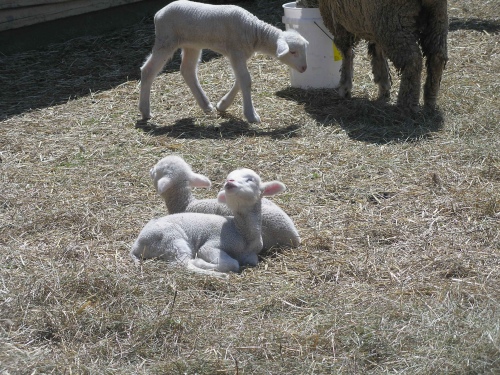Round Stone Barn, Hancock Shaker Village (1826)

This week we look at buildings at the Hancock Shaker Village, which was active from 1783 to 1960 and is now a museum. The Village‘s most iconic building is the Round Stone Barn, a large dairy barn erected in 1826. It replaced an earlier barn complex which had burned in 1825. A circular shape was used for the barn because of its functionality. As described by “H.C.” in the New York Farmer and reprinted in The Genesee Farmer (Vol. V, No. 49, December, 1835):
The great object of agricultural curiosity at Hancock, is their magnificent stone barn, two stories in height and ninety-six feet in diameter. The great mow is in the centre, and is said to he capable of containing between three and four hundred tons of hay. The floor or driveway is on tho outside of the circle, and the team goes round and comes out at the same door at which it enters. Several teams can stand on the floor and be unloaded at the same time. In the centre of this mow a large post or mast is erected, reaching from tho ground to the roof. At the apex of the roof is a small cupola. Around this post, slats or strips of plank are placed at a small distance from it, to prevent the hay from coming in immediate contact, and the hay at the bottom, being raised by an open frame from the ground, a perfect ventilation is formed, and the steam from the new hay is in this way effectually carried off.
A fire destroyed much of the barn in 1864, but it was rebuilt. Around 1870, the 12-sided upper level loft superstructure, which provides interior ventilation and illumination, was completed. In the twentieth century, cracks began appearing in the masonry. In 1968, the walls were dismantled, the foundations shored up and the walls rebuilt using the original stones. The Round Stone Barn‘s exterior woodwork’s yellow paint color was restored in 2009.
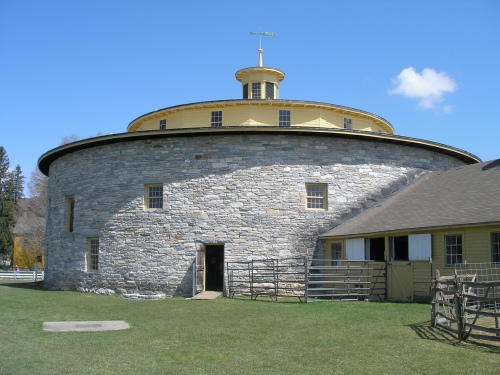
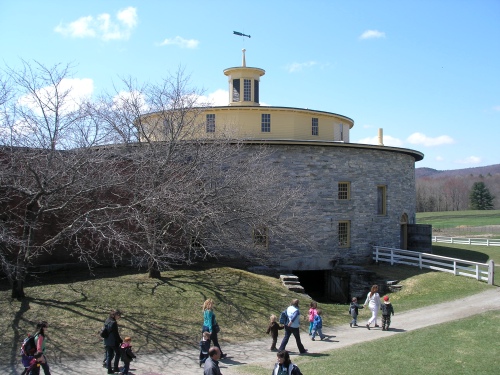
Interior pictures of the roof:
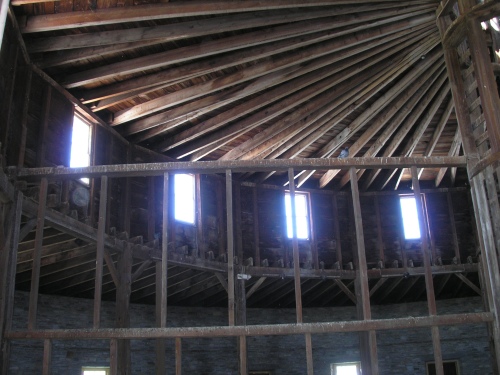
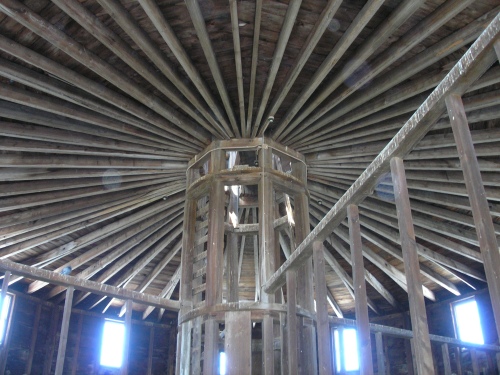
As can be seen below, a major attraction this time of year at the barn is the presence of baby animals, like the lambs seen below:
